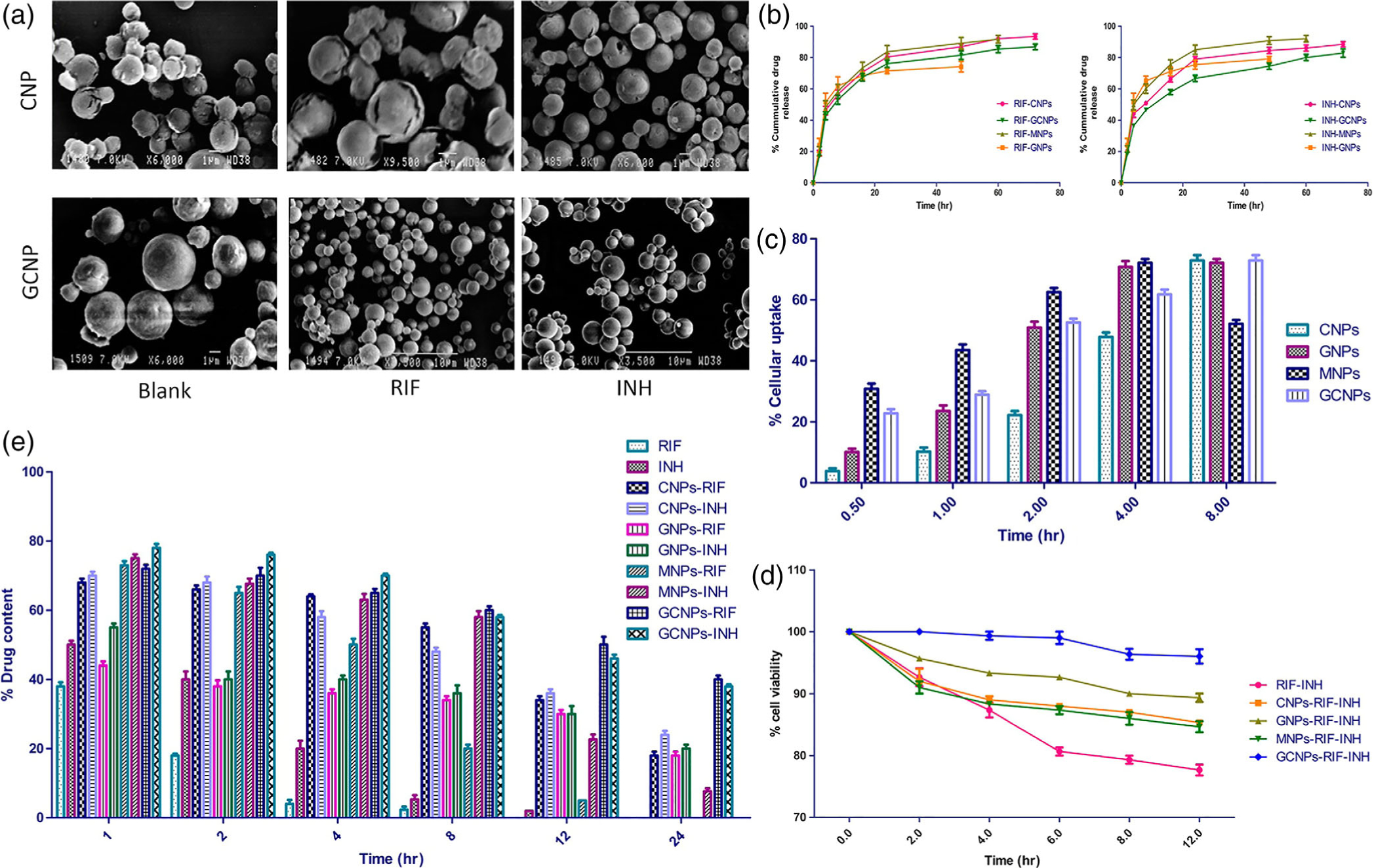FIGURE 8.

Nanoembedded microparticles for the delivery of rifampicin (RIF) and isoniazid (INH) via pulmonary route for the treatment of tuberculosis (TB) (a) Scanning electron microscopy images of chitosan and guar gum chitosan nanoembedded microparticles, where the nanoembedded microparticles are either blank, loaded with RIF, or loaded with INH. (b) in vitro release study in PBS of different nanoembedded microparticle formulations loaded with either RIF or INH, where RIF-loaded formulations released drug at a slower rate than INH-loaded formulations. (c) In vitro cellular uptake of different formulations into J-774 macrophage over time. Chitosan formulations displayed delayed cellular uptake, while mannan formulations and both guar gum formulations performed comparably, likely due to mannose moieties that allowing for targeting of mannan receptors on macrophages. (d) In vitro cell viability study in J-774 macrophages, showing reduced toxicity of nanoembedded microparticles as compared to free drug. (e) In vivo study to investigate drug distribution in the lungs of BALB/c mice over time of different formulations, where the various nanoembedded microparticles resulted in greater retention of drug as compared to free drug, with guar gum chitosan formulations exhibiting the longest retention time. (Reprinted with permission from Goyal et al. (2015). Copyright 2015 American Chemical Society)
